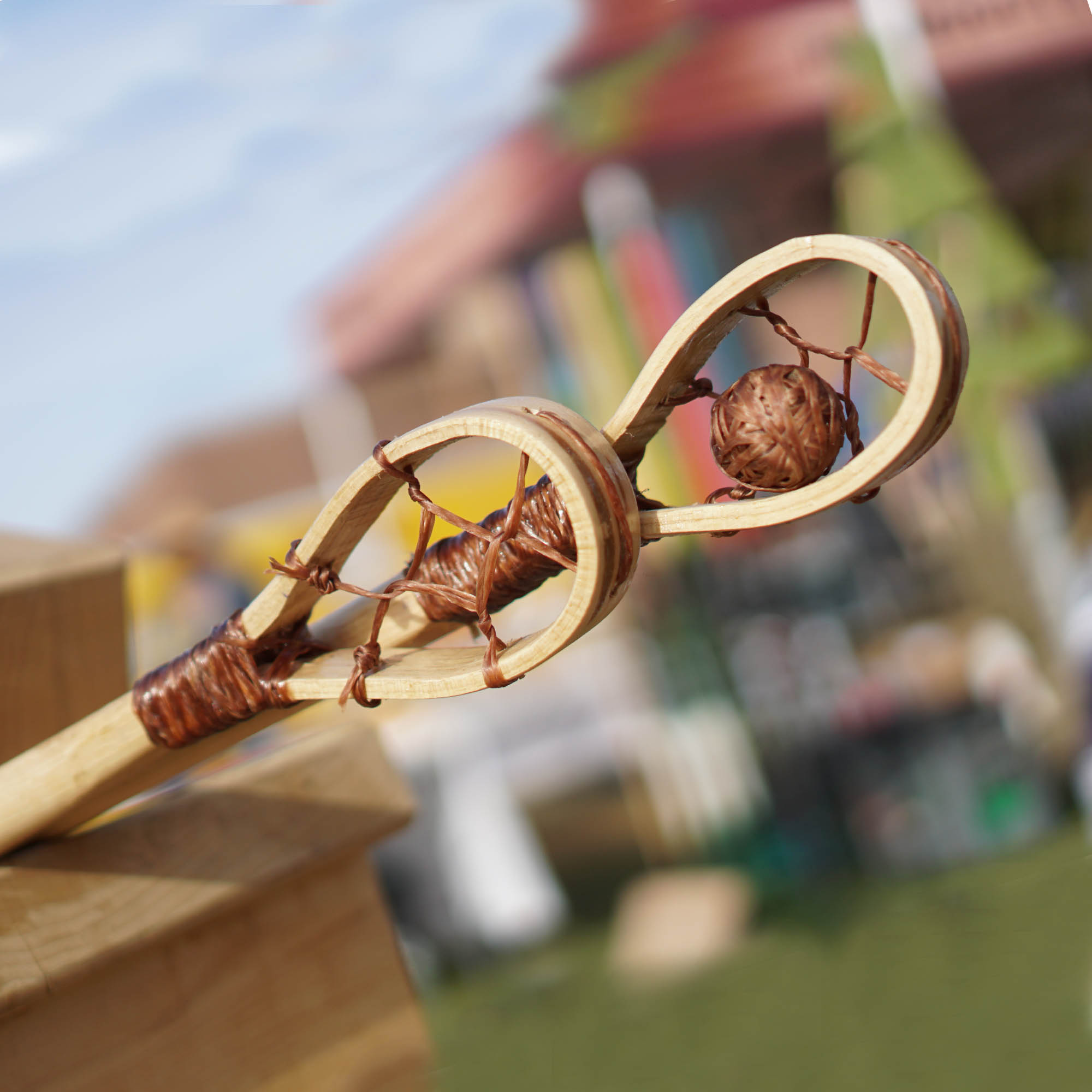Stickball, a traditional Indigenous North American sport, carries profound historical and cultural significance among various tribes. Beyond being a game, stickball holds a sacred place in the hearts of Indigenous communities, reflecting their identity, spirituality, and a deep sense of unity. In this article, we delve into the roots, evolution, and modern relevance of stickball, exploring its impact on both traditional and contemporary aspects of Indigenous life. Dive into the rich legacy of Indigenous North American Stickball.
Origins and History of Stickball
Tracing the Roots of Stickball in Indigenous Cultures
Stickball’s origins are deeply embedded in the rich tapestry of Indigenous cultures. Dating back centuries, this sport has evolved from a tribal ritual to a competitive game, with each tribe infusing its unique traditions into the gameplay.
Evolution and Changes in the Game Over Time
As time progressed, stickball underwent transformations influenced by the diverse Indigenous communities that embraced it. From variations in equipment to alterations in rules, the game adapted to the changing dynamics of each tribe while retaining its core essence.
The Significance of Stickball in Indigenous Communities
Cultural and Spiritual Aspects
For Indigenous communities, stickball is more than just a sport; it is a cultural and spiritual expression. The game often accompanies ceremonial events, marking significant milestones and reinforcing the cultural fabric that binds the community together.
Social and Communal Importance
Beyond its ceremonial role, stickball catalyzes social interaction within Indigenous communities. Tournaments and matches bring people together, fostering a sense of unity and shared identity.
Traditional Rules and Gameplay
Description of Traditional Stickball Rules
Traditional stickball follows a set of rules that vary among tribes. The game involves two teams competing to score points by propelling a ball through the opponent’s goalpost, using sticks with unique designs and materials.
Variations Among Different Tribes
Interestingly, the rules and equipment used in stickball can differ significantly from tribe to tribe. This diversity adds to the richness of the game, with each community imparting its distinct flavor to the sport.
Symbolism in Stickball
The Game as a Symbol of Identity
Stickball is not merely a pastime; it symbolizes the identity of Indigenous North American tribes. The unique rituals, symbols, and stories associated with the game contribute to the preservation of tribal heritage.
Spiritual and Ritualistic Aspects
Incorporated into various ceremonies, stickball takes on spiritual dimensions for many Indigenous communities. The game becomes a medium through which participants connect with their ancestors and the spiritual realm.
Modern Adaptations of Stickball
Changes in the Game for Contemporary Play
While preserving its cultural roots, stickball has also evolved to accommodate modern preferences. Modified rules, equipment advancements, and the inclusion of women in the sport reflect the adaptability of stickball to contemporary times.
Tournaments and Events Showcasing Stickball
The growing popularity of stickball is evident in the numerous tournaments and events that celebrate the game. These gatherings not only provide entertainment but also offer a platform for tribes to showcase their unique styles and skills.
Challenges Faced by Stickball in the Modern World
Loss of Traditional Practices
In the face of modernization, some Indigenous communities grapple with the challenge of preserving traditional stickball practices. The risk of losing the game’s authentic essence looms large.
Efforts to Preserve and Promote Stickball
To counter this threat, various organizations and individuals are actively engaged in initiatives to preserve and promote stickball. These efforts aim to safeguard the cultural heritage embedded in the game.
Prominent Indigenous Stickball Teams and Players
Highlighting Successful Teams and Players
Across Indigenous communities, certain stickball teams and players have gained recognition for their exceptional skills and contributions to the sport. These individuals and teams play a crucial role in upholding the legacy of stickball.
Their Contributions to the Game’s Legacy
Through their dedication and passion, these players and teams contribute to the broader narrative of stickball. Their stories inspire younger generations to embrace the sport, ensuring its continuity.
Stickball in Popular Culture
Depictions in Movies, Literature, and Art
The influence of stickball extends beyond tribal boundaries, finding its way into popular culture. Whether in movies, literature, or art, the game has left an indelible mark, shaping perceptions and fostering appreciation.
Impact on Public Perception
The portrayal of stickball in mainstream media has the power to shape public perceptions. Acknowledging its cultural significance in these platforms contributes to a more informed and respectful understanding of Indigenous traditions.
The Role of Stickball in Building Community Bonds
Bringing Communities Together Through the Game
Stickball serves as a communal thread, weaving together the diverse fabric of Indigenous communities. The shared experience of the game fosters bonds that extend beyond the field, strengthening the social fabric.
Collaborative Efforts to Sustain Stickball Traditions
Communities recognize the need for collaborative efforts to sustain stickball traditions. These initiatives involve elders, community leaders, and passionate individuals working together to ensure the continuity of the game.
Preservation Efforts and Initiatives
Organizations Dedicated to Preserving Stickball
Several organizations are actively dedicated to the preservation of stickball. These entities work tirelessly to document, educate, and advocate for the continued practice of the game within Indigenous communities.
Educational Programs to Pass on the Knowledge
Education plays a pivotal role in preserving stickball. Programs that teach the history, rules, and cultural significance of the game help pass on this invaluable knowledge to younger generations.
Future Outlook for Stickball
Potential for Growth and International Recognition
As interest in Indigenous cultures grows globally, there is potential for stickball to gain international recognition. This presents an opportunity for the game to transcend its cultural roots and be appreciated on a broader scale.
Encouraging the Younger Generation to Embrace the Tradition
The future of stickball rests in the hands of the younger generation. Encouraging their participation, educating them about the game’s significance, and fostering a sense of pride in their cultural heritage are crucial steps in ensuring the game’s continuity.
Interview with a Stickball Enthusiast
First-hand Account of the Cultural Importance
To provide a personal perspective, we interviewed a dedicated stickball enthusiast. Their insights shed light on the game’s deep cultural importance and its role in connecting individuals with their heritage.
Personal Experiences with the Game
Through the enthusiast’s experiences, we gain a glimpse into the joy, challenges, and spiritual connections that come with playing stickball. These firsthand accounts bring the cultural narrative to life.
Incorporating Stickball into School Curricula
The Educational Value of Stickball
Recognizing the educational value of stickball, efforts are underway to incorporate the game into school curricula. This initiative aims to ensure that future generations learn about and appreciate the cultural significance of stickball.
Efforts to Include it in Schools as Part of Cultural Education
By integrating stickball into educational programs, schools contribute to the preservation of Indigenous traditions. Students gain a deeper understanding of the game’s cultural roots and its importance in Native American history.
Conclusion
In conclusion, Indigenous North American stickball is more than a game; it’s a cultural phenomenon that has withstood the test of time. From its sacred origins to its evolving role in the modern world, stickball remains a powerful symbol of identity, unity, and resilience for Indigenous communities. Preserving and promoting this tradition is not just a responsibility; it’s a celebration of cultural diversity and heritage. Visit Our Website Time Speed Magazine.
FAQs
Is stickball played differently among different Indigenous tribes?
Yes, stickball varies in rules, equipment, and style of play among different tribes, adding to the diversity of the game.
How can individuals support the preservation of stickball traditions?
Supporting Indigenous-led initiatives, attending stickball events, and educating others about the game are effective ways to contribute.
Are there any documentaries or films about Indigenous stickball?
Yes, some documentaries and films explore the cultural significance of stickball, offering insights into its history and practice.
Can non-Indigenous individuals participate in stickball games?
While some events may be open to non-Indigenous participants, it’s crucial to approach the game with respect for its cultural context and traditions.
Where can I learn more about the history of stickball and its cultural importance?
Local Indigenous cultural centers, museums, and educational programs often provide resources and information about stickball and its cultural significance.


